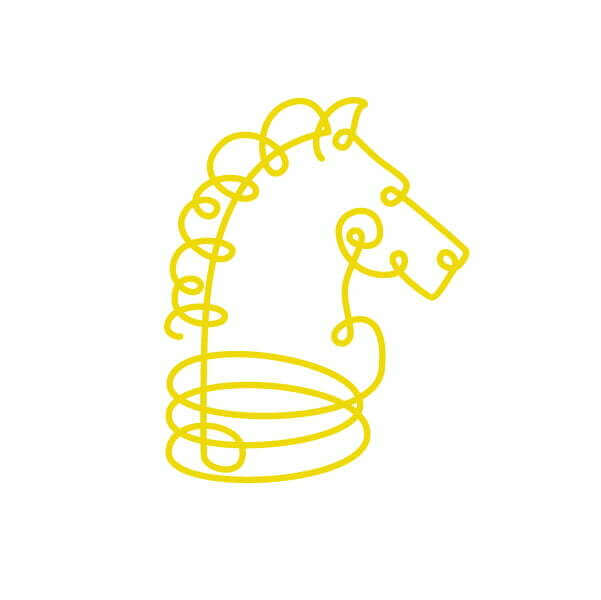Effective therapy needs to be brief–short, and solution focused therapy.
We come from a long tradition of focusing on what the client – or patient in other models– needs at the time they ask us for help. This premise, which is quite contrary to what they teach in college and other institutions, results in listening respectfully and with attention to what the problem is in the here and now. As a result of focusing on the present and what the client is asking for, treatment is shorter, briefer, because we do not open doors that are not necessary to implement a positive change. We believe this approach to be much more than a band-aid: we are providing tools for people to manage their own lives, even if they do so in a different way than the therapist might choose to live their lives.
Our treatments are as brief as possible.
This is because by the time a person calls to ask for help, they have tried many ways to change the pain that have not worked. With our perspective from outside, we are able to suggest alternative actions that will result in a different pattern, one in which the problem/pain no longer troubles them. It can be done, if we focus on what the client is asking for. Our emphasis on their world view, their priorities and the minimalistic tangible goals spurs sustainable change and healing.
Ethically we are trying to reduce the time that the client suffers.
This is a strong statement which follows our lens through which we look at reality. A translation to a relatable medical model might be: if a patient is complaining of acute abdominal pain, does the physician go look at their eyes, feet, arms and hands for extended periods of time? Probably not: we look at those areas only when specifically focusing on what the client is complaining about. We have the tools to improve their life, which will be better lived with less pain. The brevity allows for people to enjoy a better quality of life sooner. This approach reduces the cost for the client and increases our reach as therapists at a time in which mental health is in crisis and it increases referrals instead of satisfying customers. However, providing good therapy takes into account how much the client is willing to work to impact their well- being and it is up to the therapist to tap into the motivation and clarify the need for the client to work alongside us.The time we spend with the client will depend on their investment as well as their view around how much time is needed to resolve a problem. When we make this a collaborative part of the conversation the therapist reduces burnout and the client can be empowered to be realistic about what they want to achieve. This helps everyone think more clearly and productively.
What is the best therapy?
We don’t base treatment off of a diagnosis like depression or generalized anxiety or ADHD because often diagnosis have more to do with the therapist’s perspective and point of view than that of the client. We have been taught in school that if A, B and C are present, then the client belongs in a certain box. The biggest danger with that approach is that we then stop listening for how A, B and C specifically happen for this person in particular. The devil is always in the details and we need to figure those out.
In the process of figuring them out, the client will listen to themselves and hopefully get the message that they are not alone. That exploration in itself can be healing: don’t miss the opportunity to find out who the particular person is that you have in front of you. We see diagnosis as a necessary element for billing and sometimes speaking a common language with other professionals. However, we start the treatment planning for therapy from the client’s perspective on what the problem is. We listen carefully to determine how the client names it and what the client needs to feel seen and heard from the very beginning. If someone is coming in to see us for a problem with their child, we will not immediately make it about their relationship with the parenting partner or their own parents. The best therapy is the therapy that maps out the problem from the client’s point of view in their words-from the beginning.
When does the best therapy fail?
In this model, we seek to get a clear description of the problem and what is hurting now. When we do this, we resist opening too many doors. When we open many doors and create more complexity in the treatment, it makes therapy take much longer. Often getting lost in the past or in interventions that the therapist deems important rather than the client, will discourage people from continuing therapy. When therapy leaves someone feeling unheard and like the complaint they came in with isn’t being acknowledged or addressed, then the motivation is lost. This creates a vicious cycle of the therapist being frustrated or having compassion fatigue and the client becoming ‘resistant’ – which is an invention of psychoanalysis that has been adopted by almost everybody else. We would rather see this senseless cycle as avoidable.
Brief and effective therapy can be applied to any problem.
The therapy is made brief by not only listening to the problem the person brings in and the ways it is a problem to them, it is also made brief by some counter intuitive elements. Our colleagues at LoBuenoSiBreve argue that The client decides how quickly or how slow to move: we follow. We will not push if the client is not ready to move: we will adjust goals and expectations so that the client feels supported but not pressured. We especially do not go in a direction that they are not interested in. When we sense disinterest- we do a u-turn and clarify the problem, the basic descriptions, attempts to solve in the past and their motivation. When the therapy stalls, we use that as part of the therapy as an opportunity to focus and empower the client in their pacing and regulation of pressure for change.
HOW DO WE KNOW IF THERAPY IS EFFECTIVE?
The client also decides when therapy is over: if there is no longer a complaint on the part of the client, there is no longer a problem to work on, even if some therapists think there are more things to resolve. We are not looking for perfection: we are looking to promote a small, first significant change in the right direction. Achieving panacea extends therapy, makes the client feel like they are dependent and that they cannot manage without continued therapy. This is an unwitting message which gets conveyed when therapy becomes years of time.
You Can provide ethical therapy briefly
The client decides what doors we open and which ones we don’t. Of course the person we have in front of us is the sum of their past experiences, but we will ask about those as the need arises to understand what is happening in the here and now only. Everyone has issues enough to last us a lifetime, but we don’t open doors that are unnecessary for the current situation to improve. We do not DIG in the past because by definition that opens doors that we then have to close, prolonging treatment. If something is working for the client, we don’t touch it, even if it rubs the therapist the wrong way. We listen on many different levels to focus on what to work on , how to pace it and constantly modulate the pressure and interaction around change. We do this to empower the client to learn these vital skills, that they can then apply to their life, when the next problem occurs.
We have been around since 1966, have trained thousands of therapists in the US and around the world, and have written seminal books. Join us for a free workshop on January 26 at noon, online. Register now!




We are different because we teach by focusing on the practical applications, not just theory. Our specialty trainings utilize real cases and high engagement with our trainers. We have specialized trainings of real cases and dynamics with our teachers.